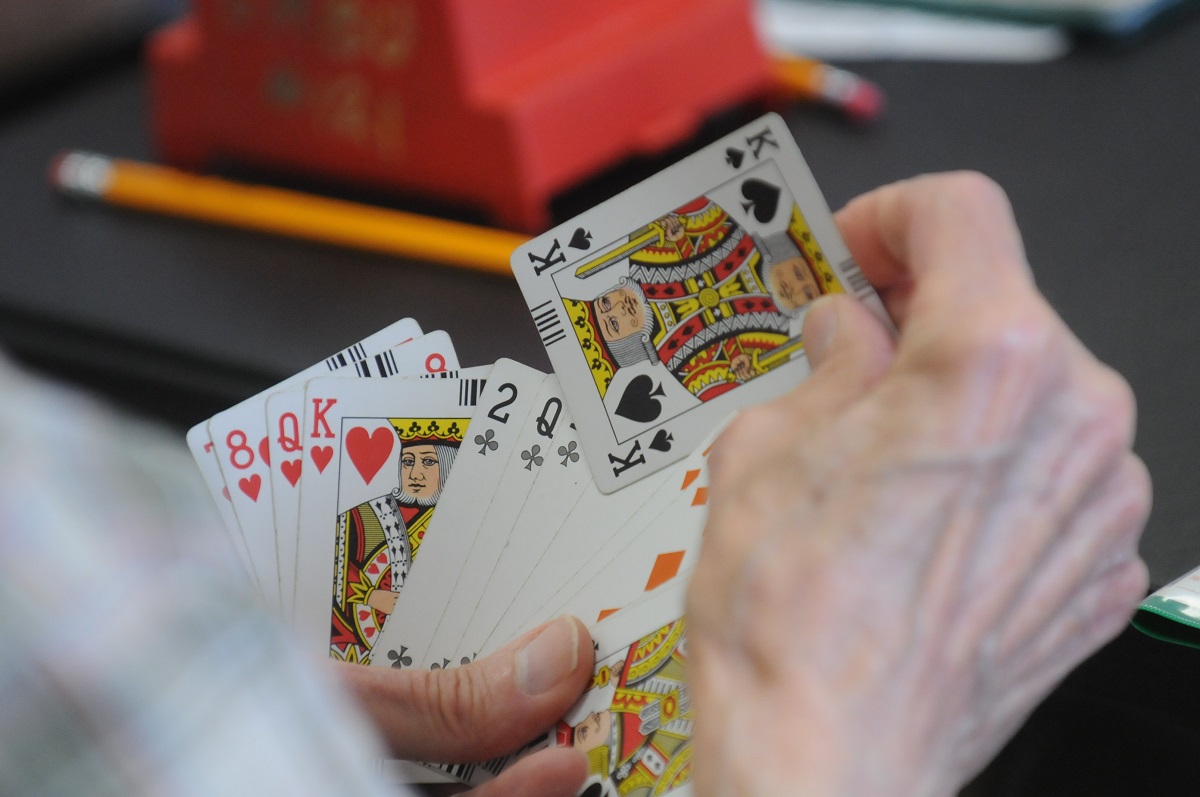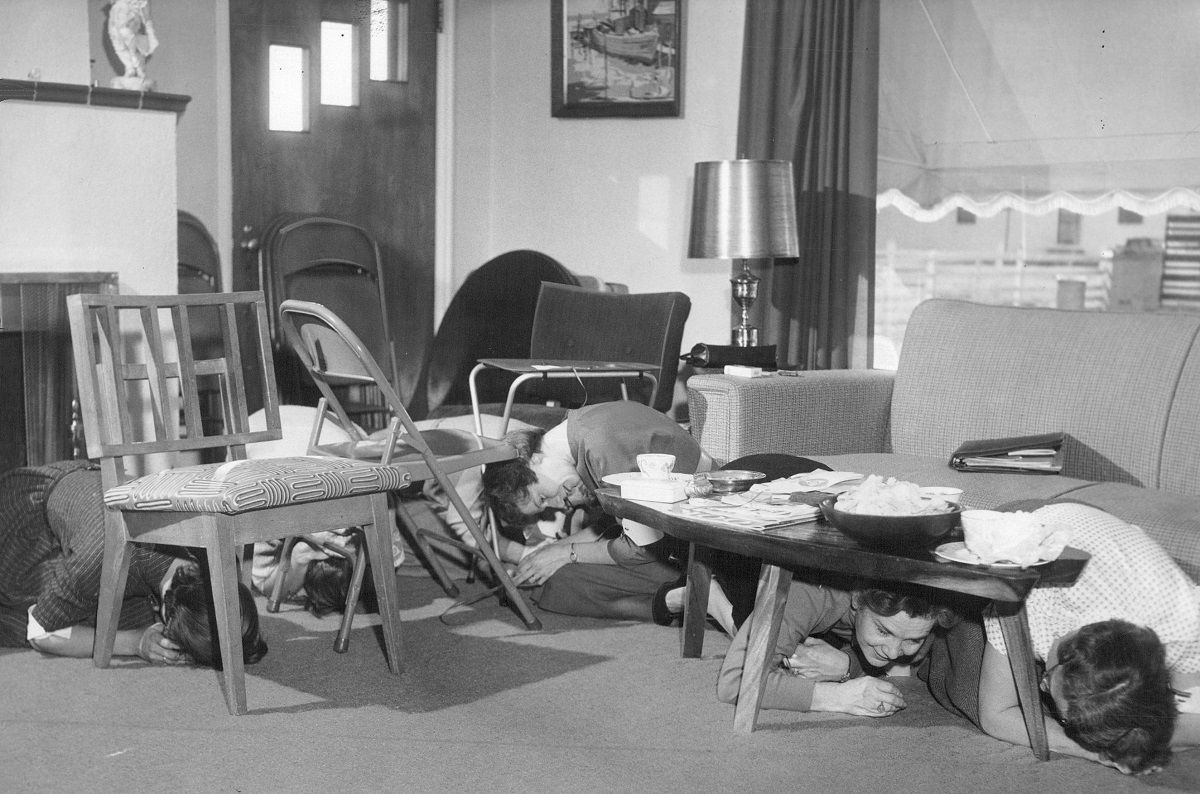It is wisely said there are three activities a married couple should never attempt to undertake together: play bridge, hang wallpaper, or learn how to drive. The disagreements so provoked can all too often prove to be murder. Literally, as in the case of the infamous Bennett Bridge Murder.
Bennett Bridge Murder: The Killing
On the evening of 29 September 1929, John and Myrtle Bennett of Kansas City were hosts to their friends Charles and Myrna Hofman for a friendly game of rubber bridge. (A mere 1/10th of a cent a point was at stake.) The Bennetts were well-to-do and lived in a large apartment with Mrs. Bennett's mother. The Hofmans lived in the same apartment building.
Like so many married couples who are fool enough to play as bridge partners, the Bennetts formed a far from ideal partnership. They were a far from ideal married couple as well, John Bennett being in the habit of slapping his wife during moments of frustration. That night, these factors would combine to bring about Bennett's undoing.
For the first hour or two, the Bennetts were trouncing the Hofmans. As the evening wore on, however, the Hofmans managed to catch up, and at the time of the fatal hand were leading by a small margin. The tables had been turned; the commanding lead of earlier in the evening had evaporated like dew before the morning sun, leaving the two couples locked in a sprint for the wire.
Although the precise composition of the fatal hand was not remembered, the bidding was recalled in a consistent manner by all the surviving parties: John Bennett opened one spade, Charles Hofman overcalled two diamonds, and Myrtle Bennett ended the auction with a jump to game in spades. After Mr. Hofman made the opening lead, Mrs. Bennett spread as dummy a collection of cards Myrna Hofman later would term "a rather good hand."

Though Myrtle Bennett clearly believed the dummy she'd laid out, added to the values her husband had to have had for his opening bid, should easily have produced game, Mr. Bennett managed to fail in his contract by two tricks. During the finger-pointing that followed, Mr. Bennett was revealed to have opened on less than full values.
Non-bridge players may fail to appreciate this point, but in the pasteboard jungle it is well understood that if one is in the habit of opening light, one had better be able to play the spots off the cards. To both open light and fail to make the resulting contract adds up to a bridge crime just a cut below trumping partner's ace or raising one's own pre-empt.
After Bennett played the hand to its inglorious conclusion, his wife gave voice to her opinion of his play by calling him "a bum bridge player." Then, according to the testimony of Myra Hofman:
He came right back at her. I don't remember the exact words. This kept up for several minutes. We tried to stop the argument by demanding the cards, but by this time the row had become so pronounced that Bennett, reaching across the table, grabbed Myrtle's arm and slapped her several times. We tried to intervene, but it was futile. While Mrs. Bennett repeated over and over in a strained sing-song tone "Nobody but a bum would hit a woman," her husband jumped up and shouted, "I'm going to spend the night at a hotel. And tomorrow I'm leaving town." His wife said to us: "I think you folks had better go." Of course, we started to go.
John Bennett went off to the bedroom and began to pack his suitcase. Myrtle dashed to her mother's room to fetch her mother's loaded gun.
Charles Hofman had turned back to have a word with John Bennett before departing and thus was standing near him when an armed Mrs. Bennett came upon them. Upon seeing the gun, Bennett immediately hurried into the bathroom, bolting the door behind him. Mrs. Bennett was not to be deterred by a closed door: she shot through it twice, each time missing her husband.
Bennett hastily exited the bathroom through another door which opened onto a small hallway. He fled down the hallway, out into the living room, and was trying to open the front door of the apartment when his wife felled him with two more shots.
The police were summoned, and Myrtle Bennett was charged with first degree murder for the shooting death of her husband in what became known as the Bennett Bridge Murder.
The Trial
The trial of Myrtle Bennett did not go down in the annals of jurisprudence as one of the more fair and even-handed examples of justice in action. Mrs. Bennett wept copiously throughout the proceedings, at one point avowing that she'd "rather have been dead" than to have caused the death of her husband. (This line of defense was much facilitated when the judge declined to admit into evidence Mrs. Bennett's original statement to the police, in which she had told a rather different story.)
At the trial, a new spin was placed on the events of that night. Bennett's "... and tomorrow I'm leaving town" was transformed from an "I'm leaving you forever" statement into an announcement that he had business the next day in St. Joseph, Missouri. According to Mrs. Bennett's testimony (supported by her mother's testimony about what Mrs. Bennett had said when she came to fetch the gun), Mr. Bennett had instructed his wife to bring him the pistol. Mrs. Bennett claimed that he routinely carried it with him on out-of-town business trips. Mrs. Bennett further claimed that while bringing the gun to her husband, she stumbled into a chair, causing the pistol to go off accidentally, wounding Mr. Bennett. Bennett then grabbed her arm, either to help her regain her balance or to take the gun away from her, at which time the gun went off again, mortally wounding him.
Mrs. Bennett was acquitted. The jury chose to ignore the physical evidence of two bullet holes found in the bathroom door, and of Bennett's body lying by the front door without a suitcase in sight. Despite having chased her husband through the apartment, having shot at him four times, and having hit him twice, Mrs. Bennett was acquitted on the grounds that her shooting of her husband was accidental. Myrtle Bennett then collected on her husband's $30,000 life insurance policy, a far from insignificant sum in those Depression years.
Although some now recall the case being ruled one of justifiable homicide based on John Bennett's bidding and play, in truth his death was deemed to have been brought about by accidental discharge of a firearm. Though Myrtle Bennett had succeeded in getting off scot-free for the murder of her husband, she failed to set the precedent that would have made the shooting of a bridge partner justifiable in the eyes of the law — provided it could be proved the victim's play had provoked a murderous response.
In his 1934 collection While Rome Burns, drama critic and essayist Alexander Woollcott had this to say of the fair murderess in her post-acquittal years:
Myrtle Bennett has not allowed her bridge to grow rusty, even though she occasionally encounters an explicable difficulty in finding a partner. Recently she took on one unacquainted with her history. Having made an impulsive bid, he put his hand down with some diffidence. "Partner," he said, "I'm afraid you'll want to shoot me for this." Mrs. Bennett, says my informant, had the good taste to faint.
The Hand
The famed Bennett Bridge Murder Hand will forever remain a mystery. None of the three survivors remembered its exact composition, and the cards themselves were sent flying during the altercation between the Bennetts, making it impossible that any of the police called to the scene would have had a chance to view it. As such, the hand widely believed to have been Mr. Bennett's Waterloo is likely as much a fiction as the tale told by his wife on the stand. Nevertheless, a "reconstruction" of the infamous hand began to circulate in periodicals shortly after the crime:
| Mr. Hofman | Mrs. Bennett |
Mrs. Hofman |
| Mr. Bennett |
|
|
|
|
The bidding, as you will recall, had gone one spade by Bennett, two diamonds by Hofman, and four spades by Mrs. Bennett. Four spades was a makeable contract on the layout shown above.
(Only bridge players are likely to care about this part, but the opening lead against this fictional hand was the ace of diamonds, followed by a shift to the jack of clubs at trick two. According to lore, after winning the king of clubs, Bennett was supposed to have misguessed the location of the trump queen and from there have gone on to establish but cut himself off from dummy's good clubs, ending up down two. It was a badly played hand, but I've seen many a layout butchered much worse by declarers who lived to tell about it.)
At the time of the Bennett murder, America was a country gone crazy over bridge. That someone sooner or later was going to get shot over it was a given; it was just a question of when. That the first bridge murder happened in the heartland of America with a wife shooting her husband seemed only right — countless spouses had by that time dreamed of doing the same thing to their loved-one-turned-bridge-partner-monster. Just as Lorena Bobbitt would decades later be seen as having struck a blow for the wives of cheating husbands everywhere, so was Myrtle Bennett placed on a similar pedestal by beleaguered bridge players across the land. Notice had been served that mishandling the dummy might lead to more than one stiff being dropped at the bridge table.
Speculation over what the layout of the cards had actually been (and thus how deserving Bennett had been of his fate) quickly gave way to dueling analyses of the hand as touted in the newspapers. Several bridge authorities (most notably Sidney Lenz and Ely Culbertson) were called upon to analyze the bidding and the play. In the final analysis, though Bennett was deemed to have not played the cards as well as he could have, nothing in his line of play was so seriously flawed that his locating the errant queen of trumps wouldn't have overcome it. "My kingdom for a horse," said Richard III. "My life for a queen," was what Bennett should have said.

